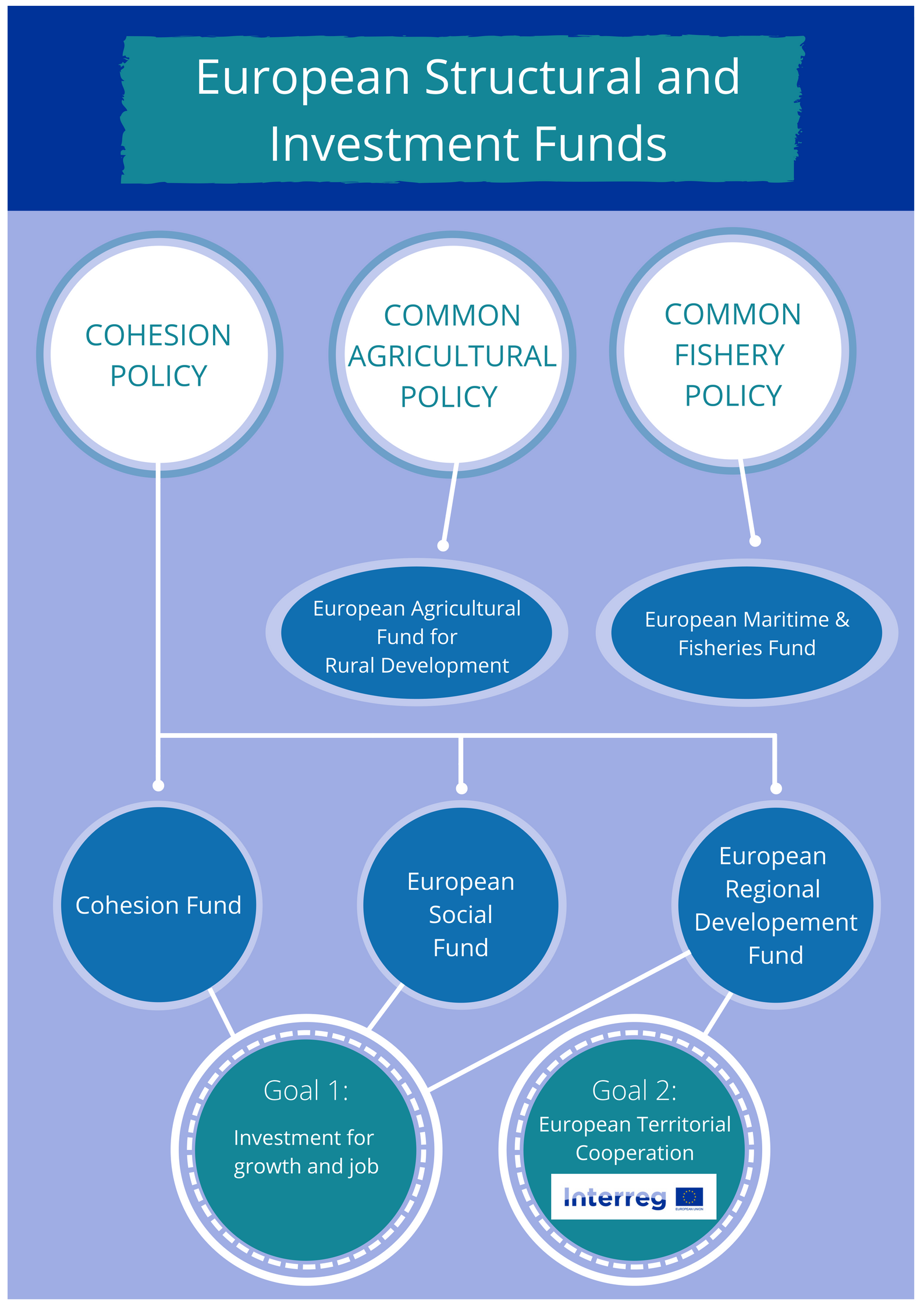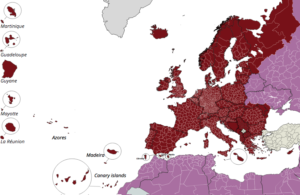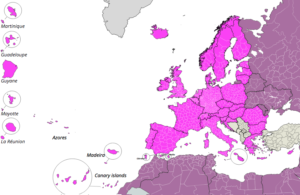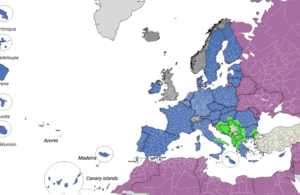Interreg 2021-2027: Fostering Cooperation for a Stronger Europe
Interreg is a key European Union (EU) instruments that strengthens cooperation between regions and countries within the EU. As part of the EU’s Cohesion Policy, Interreg plays a vital role in promoting regional development, cohesion, and reducing economic disparities. For the 2021-2027 period, Interreg is focused on addressing current challenges like climate change, digital transformation, and social inclusion.
Interreg’s Evolution and Expansion
Discover the growth of the EU’s Interreg program since 1990
Starting in 1990 as a Community Initiative with a EUR 1 billion budget, Interreg focused on cross-border cooperation. Over time, it expanded to include transnational and interregional cooperation.
Interreg 2021-2027:
The current period’s EUR 10 billion budget highlights Interreg’s evolution, featuring reinforced cooperation with partner countries via Interreg IPA and Interreg NEXT, and a dedicated strand for EU outermost regions and neighboring countries.
Explore Interreg Programmes:
Explore Interreg.eu to access an interactive map showcasing Interreg programs across borders, illustrating its growing impact on regional collaboration and development.
- Cross border, Turning Border Obstacles into Opportunities (64 programmes)
- EU Programmes: 49 programmes within the EU focus on turning border obstacles into opportunities between EU Member States.
- Interreg IPA: 10 programmes operate at the EU’s border with IPA countries, mainly supporting the EU’s enlargement policy.
- Interreg NEXT: 5 programmes are implemented at the EU’s external eastern and southern borders. Four cross-border programmes encourage cooperation with Ukraine and Moldova
- Transnational, Supporting Larger Scale Initiatives (13 programmes)
- Continuation: 13 transnational cooperation programmes will continue in supporting large-scale cooperation activities in Europe and beyond.
- Direct Support: 4 of them (Interreg Baltic Sea Region, Interreg Danube Region, Interreg IPA Adrion, and Interreg Alpine Space programme) will directly back Macro Regional Strategies covering their respective geographical areas. 80% of their thematic concentration should align with a Macro Regional Strategy.
- Interregional, Enhancing Cohesion Policy Effectiveness (4 programmes)
- Outermost Regions, the recognition (5 regions)
Strand D encompasses cooperation within a specific, often expanded, geographical area:
- Amazonia “Plateau des Guyanes”
- Caribbean Space
- Middle Atlantic / Gulf of Guinea
- Indian Ocean (spanning from Australia to India and the Eastern coast of Africa)
- Mozambique Channel (through the extension of the existing Mayotte-Madagascar-Union of Comoros programme)
2021-2027 is the sixth period of Interreg and therefore it is called Interreg VI. With a budget of nearly EUR 10 billion, around 100 Interreg programmes operate across borders, both within and outside the EU, contributing to the implementation of the EU’s main cohesion policy priorities.
What is the EU Cohesion Policy
Cohesion policy is one of the policies of the European Union funding hundreds of thousands of projects all over Europe from the European Regional Development Fund, the European Social Fund and the Cohesion Fund.
It is the policy under which thousands of Interreg cooperation projects also get funding to tackle specific challenges throughout the European Union.
The priorities of the EU Cohesion Policy 2021-2027 for the web are:
- Smart growth: Encouraging innovation, digitalization, and competitiveness in businesses and industries.
- Green transition: Supporting the shift towards a sustainable, low-carbon economy and promoting environmental protection.
- Social inclusion: Enhancing access to quality employment, education, and training opportunities, and fostering social cohesion.
- Territorial development: Strengthening regional development, urban-rural connections, and cross-border cooperation.
- Efficient and sustainable infrastructure: Investing in transport, energy, and digital infrastructure to enhance connectivity and sustainability.
The European Regional Development Fund
The European Regional Development Fund (ERDF) is a fund allocated by the European Union aiming to help to redress the main regional imbalances in the Union. It aims to allow less advantageous regions to start attracting private sector investments, and create jobs on their own.
Strands of Cooperation
Using our search programme interactive map you can find out which are the areas covered by your programmes.
You can apply for your own project based on the criteria of the current programmes
Cross - Border Cooperation
Interreg cross-border cooperation, known as Interreg A, supports cooperation between NUTS III regions from at least two different Member States lying directly on the borders or adjacent to them.
Transnational Cooperation
Interreg transnational cooperation, known as Interreg B, involves regions from several countries of the EU forming bigger areas where it aims to promote better cooperation and regional development within the Union by a joint approach to tackle common issues.
Interregional Cooperation
Interreg has 4 interregional cooperation programmes, known as Interreg C : Interreg Europe, Interact, Urbact and Espon. The interregional programmes are geographically “pan-European” covering vast areas.
The Instrument for Pre-accession Assistance (IPA) Cross - Border Cooperation
Interreg IPA CBC supports cross-border co-operation between candidate countries, potential candidate countries and EU Member States, to contribute in their accession preparations with a territorial and cross-border focus.
Interreg NEXT Cooperation
A total of 15 programmes are implemented under ENI CBC. They cover 12 land borders, one sea crossing and three sea basins, stretching from Finland and Russia in the north, to countries like Hungary and Ukraine in the east, and Italy, Northern Africa and the Middle East in the south.
Following the Russian military aggression against Ukraine and in line with the EU restrictive measures, the Commission is suspending the cooperation with Russia and Belarus and their participation in the 2021-2027 Interreg NEXT programmes.
Outermost Regions
Outermost regions cooperation programmes play a pivotal role in ensuring a European presence in four key areas: the Atlantic, the Caribbean, Amazonia and the Indian Ocean.
The aim of the specific Strand D, created for outermost regions, is to enable seamless and effective cooperation with their neighbouring countries and territories. Consequently, the Interreg Regulation allows for the management of both external funds and the ERDF under a unified set of rules.
Five cooperation programmes in the outermost regions account for 3.5% of the total INTERREG funding, with over £280 million allocated as follows:
- Interreg Indian Ocean
- Interreg Caribbean
- Interreg Amazonia
- Interreg Mozambique Channel
- Interreg Madeira-Azores-Canaries






